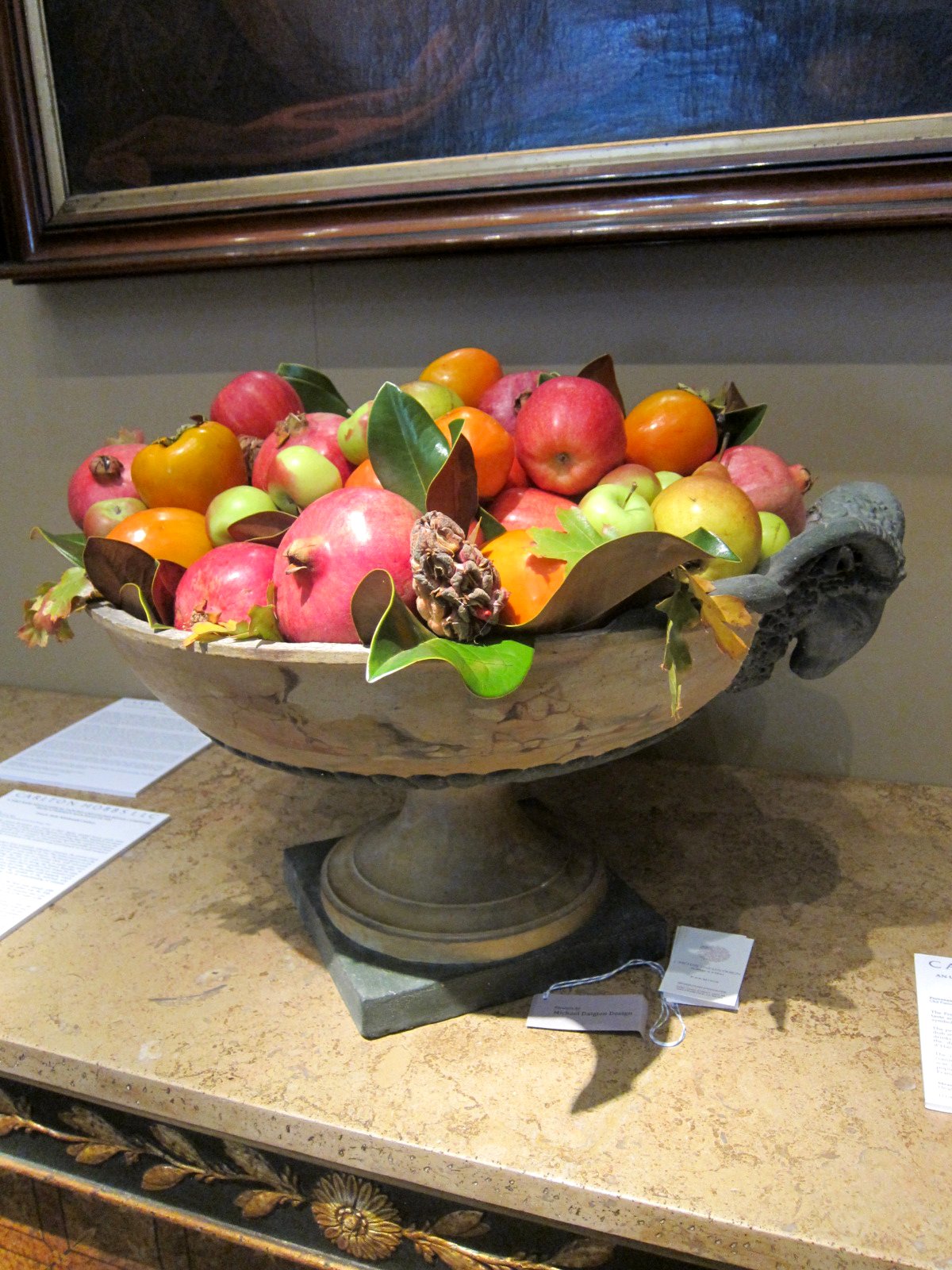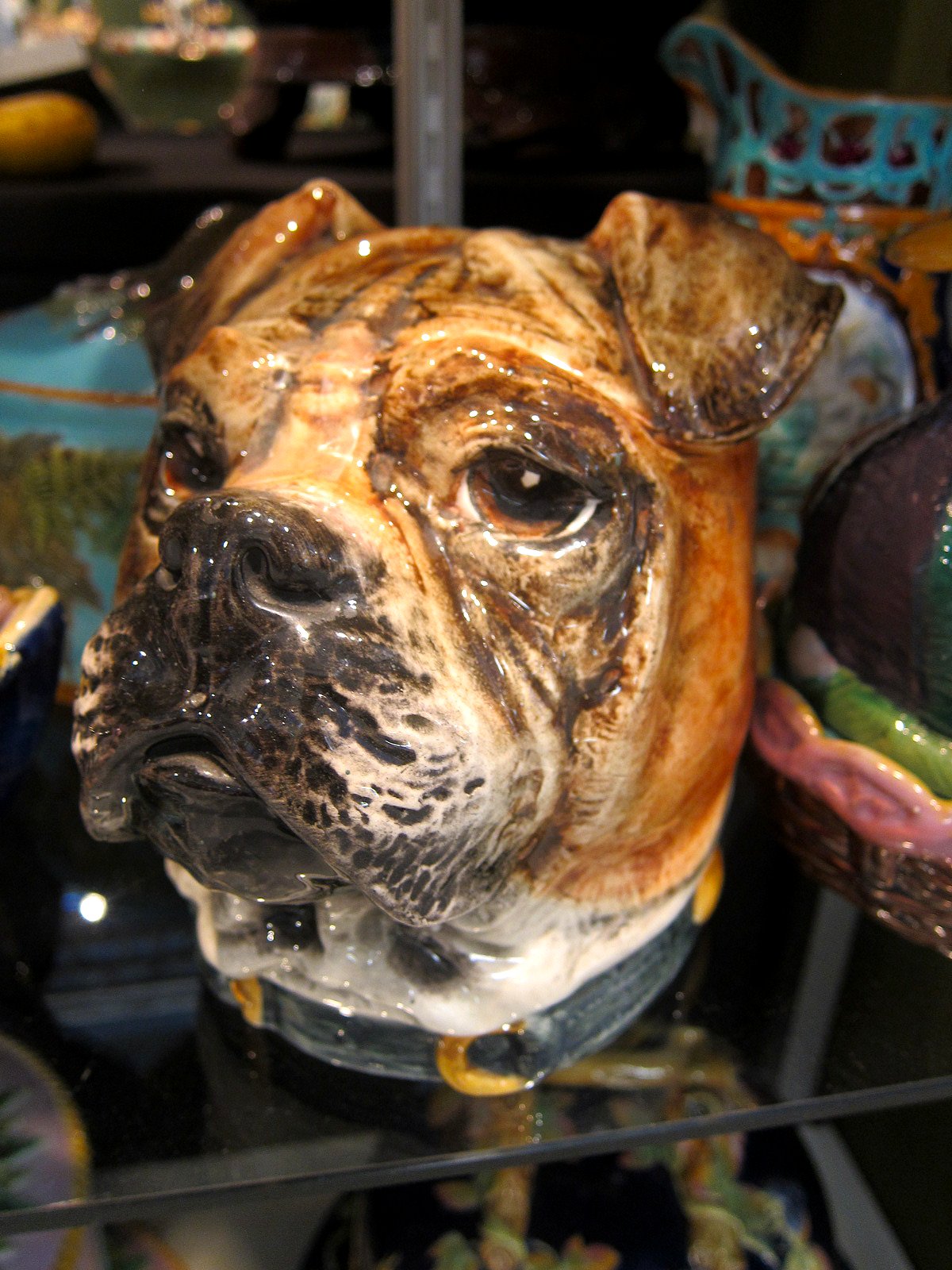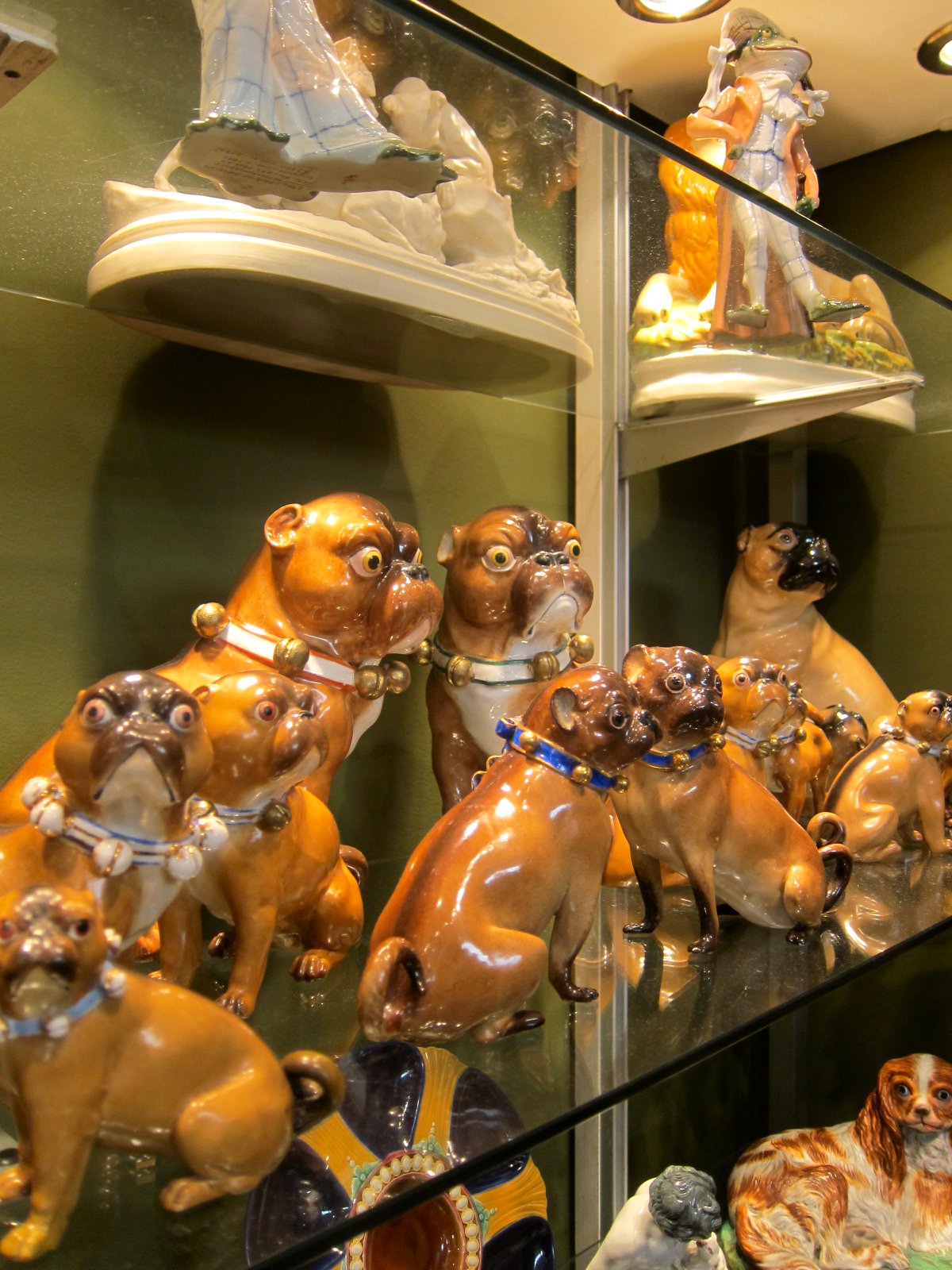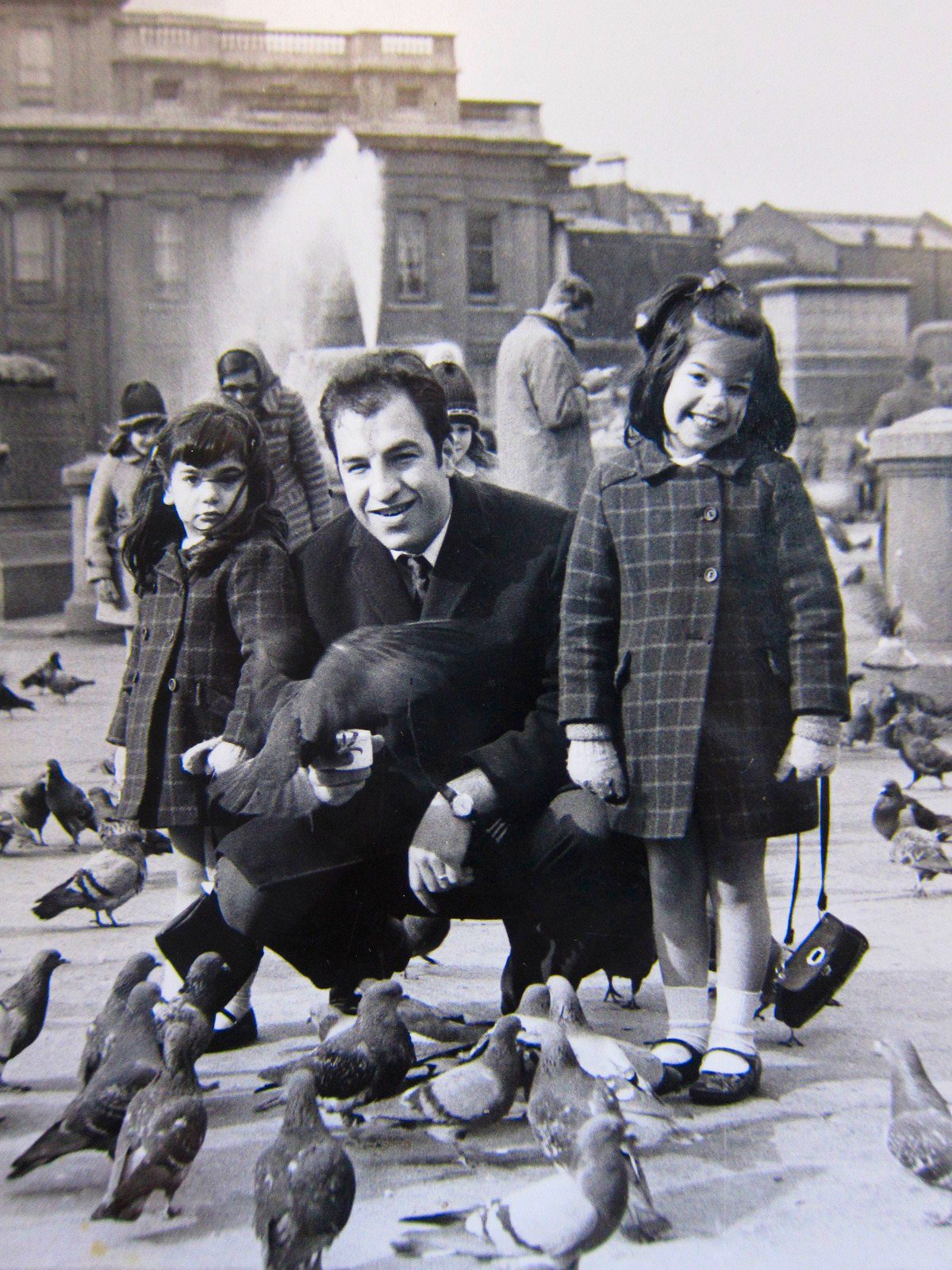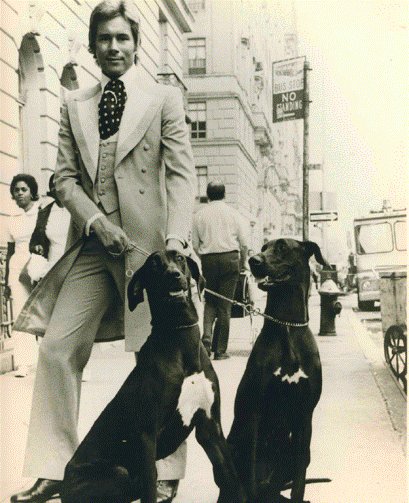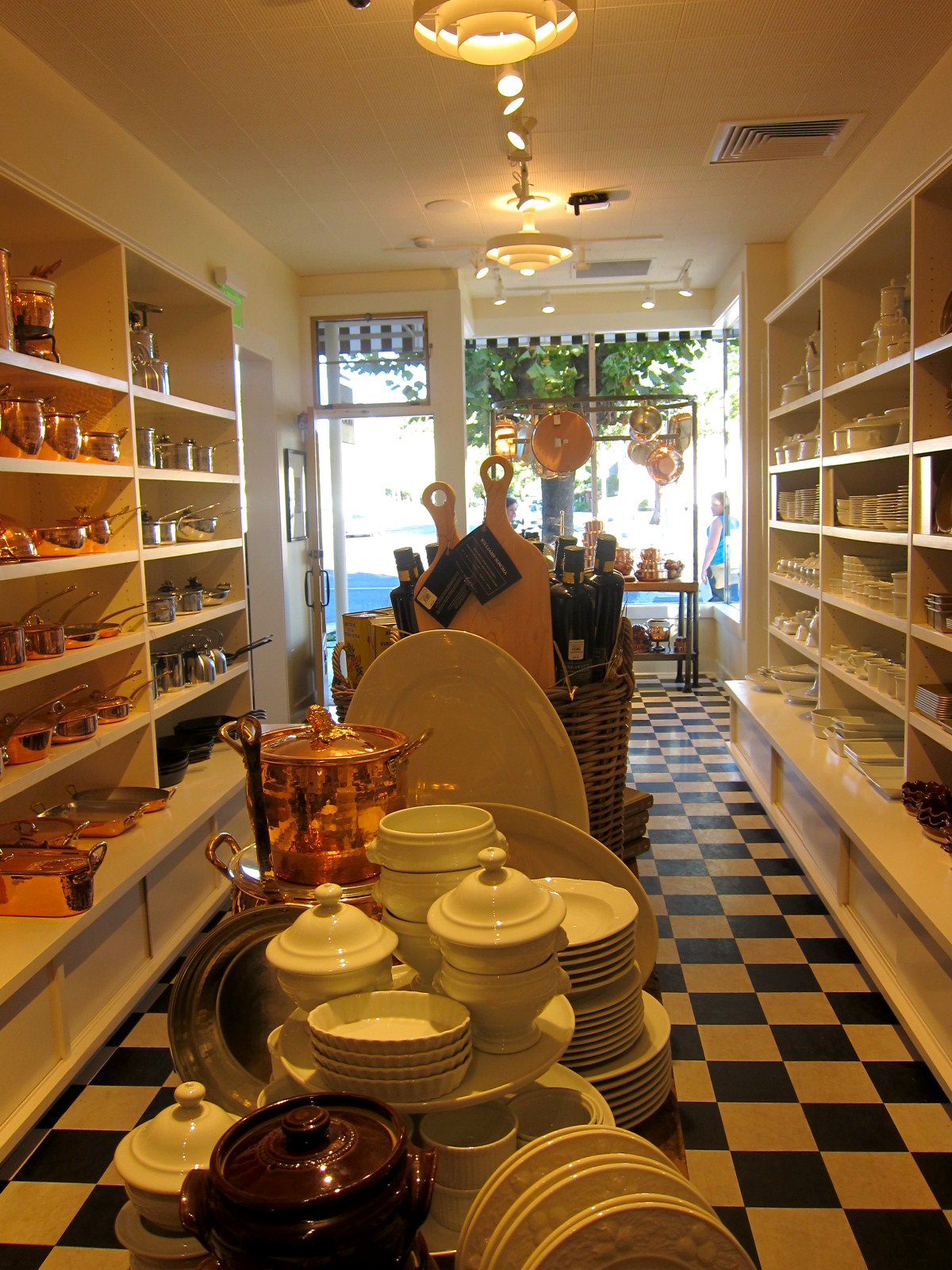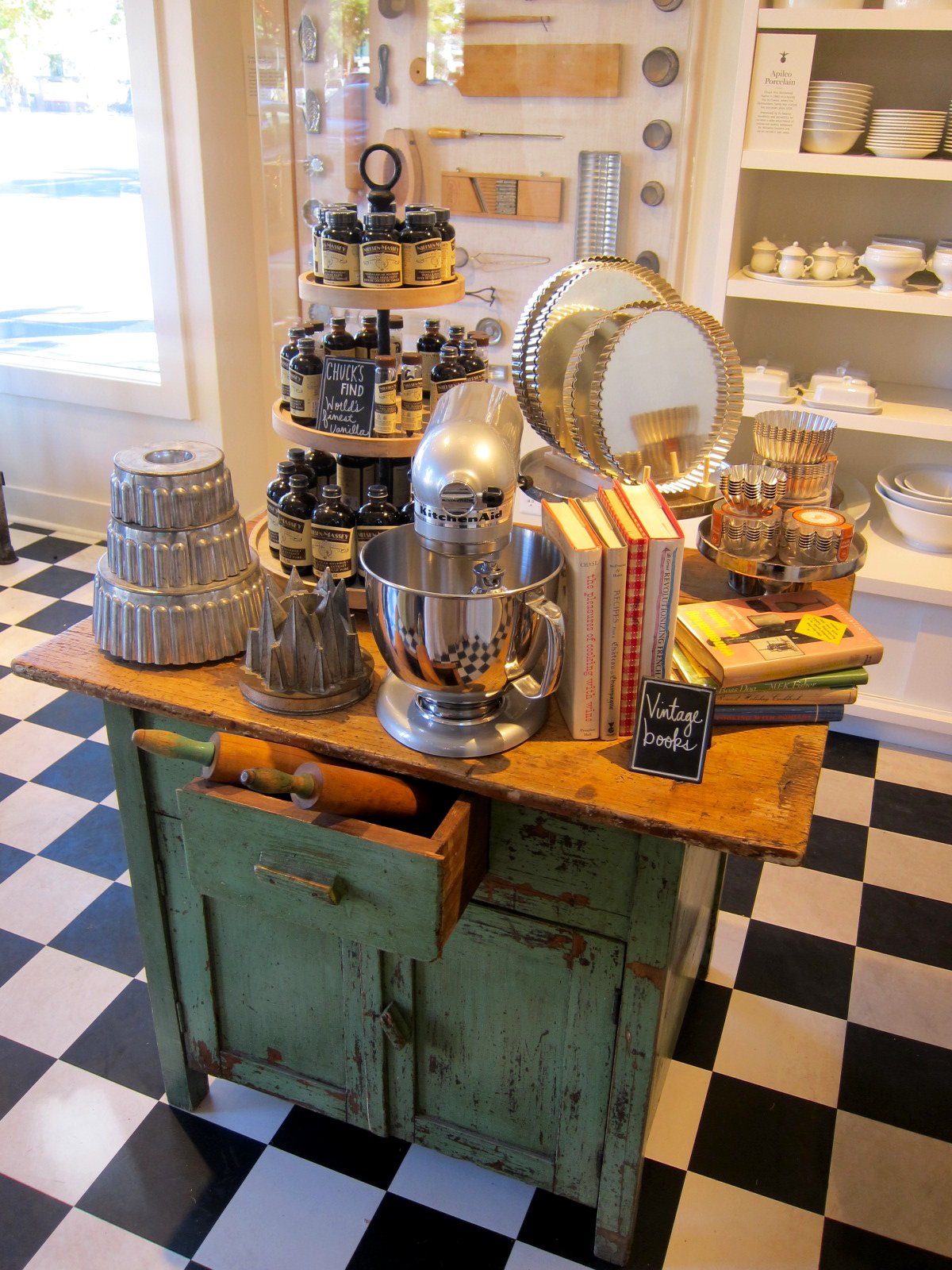Last Friday, on a gloriously balmy autumn day, my dear friend Jeannette and I attended the San Francisco Fall Antiques Show. This is the west coast's oldest and most esteemed antiques show, attracting dealers from across the country and Europe. The show runs over a four day period at the Fort Mason Center's Festival Pavilion which overlooks sweeping views of the bay.
Aside from having the opportunity to view quality antiques on display and for sale, this well organized show also arranges for a series of lectures to be given by prominent guest speakers from the worlds of art and interior design. There are numerous book signings too, and this year Robert Couturier and Aerin Lauder were among those invited to speak and tout their latest offerings.
I was eager to tour the beautifully laid out show and view the goodies on offer, secretly hoping nothing would catch my eye enough to lead me down the slippery road to ruin. In my giddy state of excitement, I regrettably fell short in photographing many of the wonderful booths that piqued my interest. I hope to rectify this sorry matter at next year's show and vow to strive harder in focusing my efforts and not becoming too distracted from my reportage.
I did, however, manage to swoon over my favorite booth of the entire show long enough to snap a couple of photographs for your enjoyment. It had me salivating at its glories in true Pavlovian style. Piraneseum is the leading source of seventeenth to nineteenth century grand tour souvenirs and architectural paintings, models, and miscellany. The coveted items were effectively and attractively displayed against a backdrop of brilliant goldenrod. For sale were sublime etchings, paintings, and micro-mosaics of real and imagined ruins by the likes of Giovanni Battista Piranesi and Viviano Codazzi. Architectural models, once purchased by wealthy young travelers to the continent as mementos of their grand tour, were also in abundance. Some, such as the column photographed above, were quite substantial in size. Had I the funds, I would have happily taken a few of the paintings and souvenirs home with me. Sadly, these are museum-quality works for serious collectors with price tags to match.
Reluctantly tearing myself away, Jeannette and I continued touring the show. We backtracked to the nearby booth of Carlton Hobbs who did justice to the season with this bountiful autumnal arrangement of leaves and flowers contained within an impressively large bowl embellished with rams heads. I believe the bowl was one of a pair.
Next, I spotted an outstanding duo of covered Regency tole chestnut urns, standing at least a foot in height and dating to around 1810. These were on display in the elegantly presented booth of Michael Pashby Antiques. Decorated with naval scenes featuring tall ships, and adorned with lion's mask handles, these too could have easily returned home with me. After losing my head at auction earlier in the year, however, coming home with yet another pair of urn-like decorations may not have been such a wise idea, at least for now.
Specializing in English furniture from the eighteenth and nineteenth centuries, with some earlier examples thrown into the mix, this was one booth I wished I had photographed. Many fine pieces of furniture, along with decorations from the same period, were so very temptingly displayed.
With all the ogling going on, Jeannette and I decided we had better take a few moments away from the antiques to rest our eyes and enjoy a splendid luncheon at Café Girandole, the show's marvelous eatery set up right at the heart of all the comings and goings. People watching is always such a treat here. Seated at attractively set tables, each with a little seasonal flower arrangement to cheer up the lunch crowd, we spotted plenty of "ladies who lunch" in their finest togs. There were many gentlemen diners too, looking splendid in their smart attire while sipping on their cocktail or wine, and dining on the tasty selection of fare on offer. Capping off our delicious lunch with a sweet treat and coffee, we returned to the hunting ground refreshed and ready for battle.
Walking into the booth of Jeff R Bridgman Antiques, which is jam packed with an extraordinary selection of unusual American flags and general Americana, I was struck by the piece shown in the photograph above. It depicts two young lovers being directed by cupid towards eternity. This romantic Federal period watercolor was right up my aesthetic alley, but fell way beyond my pittance of a budget.
It seems a nautical theme was evolving as I next spied an English oval locket from 1800 at the Frank's Fisherman booth, which specializes in maritime antiques and scientific instruments. The locket shows a forlorn maiden mourning the death of a sailor. The piece attracted me because of its subject matter. I collect mourning hair art that will one day feature in a future post on this blog. Although this diminutive locket was not made of hair, the symbolism depicted mirrors several of the mourning pieces in my collection.
My friend Jeannette's favorite booth of the show was that of Eve Stone Antiques, and I can see why. This small photograph does not do justice to the perfectly polished and gleaming display of pots, pans, kettles, food molds, and the battalion of other household items of copper and brass on display. Ms. Stone must possess the largest and most impressive collection of antique food molds I have ever laid eyes upon, outside of the Brighton Pavilion perhaps. I can only imagine the towering wobbly sugary delights to have emerged from these marvelous geometrically shaped molds.
And then there was this little fellow, below, who guarded the ceramics on show at Jesse Davis Antiques.
He was not the only canine gracing the glass shelves of the booth. In fact, an entire kennel's worth of dogs had congregated in one corner, smartly attired in their jingly belled collars.
Each year, the San Francisco Fall Antiques Show presents a theme in the form of a special exhibition. I've seen everything from Egyptology to Chinoiserie being celebrated, and typically one cannot fail but to be wowed by the creative displays upon entering the pavilion. It is the first thing on view. This year's theme focused on precious metals in art and antiques and I'm afraid I walked right past the entire presentation. Perhaps someone failed to flip the switch on the six large electronic screens that were set up at the entrance to the pavilion, so most of the dazzling and wowing was lost.
Not to worry though as the star attraction of the special exhibition was the gold nugget you see below, which was hiding in a glass enclosure alongside other California gold rush era related objects.
This monumental chunk, named The Butte Nugget, weighs around six pounds and is one of the largest modern gold nuggets to have been discovered in California. It had just sold on the day we visited the show, and was only put on display the evening before for the gala party. I'm sure, like me, you are wondering exactly where the nugget was unearthed. Understandably, both the location and selling price remain a secret, but what has been reported is that "a prominent Bay Area collector" is now the new owner, and the nugget fetched around $400,000.
And with that, our show experience came to a glittering finale.
If you find yourself in San Francisco next autumn, you too might consider visiting this wonderful show which provides countless opportunities to gain a better understanding of antiques. You may also get lucky and unearth just the right treasure to take home with you. Oh, and best of all, the show benefits Enterprise For High School Students, a non-profit organization assisting students transitioning into the workplace.
Nota bene: I am neither paid nor do I receive recompense in exchange for applauding products or services within my blog. I do so because I enjoy them. If you are a kindred spirit, you too enjoy recommending nice things to fellow good eggs.
Aside from having the opportunity to view quality antiques on display and for sale, this well organized show also arranges for a series of lectures to be given by prominent guest speakers from the worlds of art and interior design. There are numerous book signings too, and this year Robert Couturier and Aerin Lauder were among those invited to speak and tout their latest offerings.
I was eager to tour the beautifully laid out show and view the goodies on offer, secretly hoping nothing would catch my eye enough to lead me down the slippery road to ruin. In my giddy state of excitement, I regrettably fell short in photographing many of the wonderful booths that piqued my interest. I hope to rectify this sorry matter at next year's show and vow to strive harder in focusing my efforts and not becoming too distracted from my reportage.
An impressive array of grand tour mementos and works of art begging to be taken home
Photo: Chronica Domus
I did, however, manage to swoon over my favorite booth of the entire show long enough to snap a couple of photographs for your enjoyment. It had me salivating at its glories in true Pavlovian style. Piraneseum is the leading source of seventeenth to nineteenth century grand tour souvenirs and architectural paintings, models, and miscellany. The coveted items were effectively and attractively displayed against a backdrop of brilliant goldenrod. For sale were sublime etchings, paintings, and micro-mosaics of real and imagined ruins by the likes of Giovanni Battista Piranesi and Viviano Codazzi. Architectural models, once purchased by wealthy young travelers to the continent as mementos of their grand tour, were also in abundance. Some, such as the column photographed above, were quite substantial in size. Had I the funds, I would have happily taken a few of the paintings and souvenirs home with me. Sadly, these are museum-quality works for serious collectors with price tags to match.
Another view of Piraneseum's resplendent booth
Photo: Chronica Domus
Reluctantly tearing myself away, Jeannette and I continued touring the show. We backtracked to the nearby booth of Carlton Hobbs who did justice to the season with this bountiful autumnal arrangement of leaves and flowers contained within an impressively large bowl embellished with rams heads. I believe the bowl was one of a pair.
Seasonal offerings at the Carlton Hobbs booth
Photo: Chronica Domus
Next, I spotted an outstanding duo of covered Regency tole chestnut urns, standing at least a foot in height and dating to around 1810. These were on display in the elegantly presented booth of Michael Pashby Antiques. Decorated with naval scenes featuring tall ships, and adorned with lion's mask handles, these too could have easily returned home with me. After losing my head at auction earlier in the year, however, coming home with yet another pair of urn-like decorations may not have been such a wise idea, at least for now.
How I longed to have taken these two beauties home with me
Photo: Chronica Domus
Specializing in English furniture from the eighteenth and nineteenth centuries, with some earlier examples thrown into the mix, this was one booth I wished I had photographed. Many fine pieces of furniture, along with decorations from the same period, were so very temptingly displayed.
With all the ogling going on, Jeannette and I decided we had better take a few moments away from the antiques to rest our eyes and enjoy a splendid luncheon at Café Girandole, the show's marvelous eatery set up right at the heart of all the comings and goings. People watching is always such a treat here. Seated at attractively set tables, each with a little seasonal flower arrangement to cheer up the lunch crowd, we spotted plenty of "ladies who lunch" in their finest togs. There were many gentlemen diners too, looking splendid in their smart attire while sipping on their cocktail or wine, and dining on the tasty selection of fare on offer. Capping off our delicious lunch with a sweet treat and coffee, we returned to the hunting ground refreshed and ready for battle.
I was rather attracted by this American Federal period watercolor dating to 1817
Photo: Chronica Domus
Walking into the booth of Jeff R Bridgman Antiques, which is jam packed with an extraordinary selection of unusual American flags and general Americana, I was struck by the piece shown in the photograph above. It depicts two young lovers being directed by cupid towards eternity. This romantic Federal period watercolor was right up my aesthetic alley, but fell way beyond my pittance of a budget.
It seems a nautical theme was evolving as I next spied an English oval locket from 1800 at the Frank's Fisherman booth, which specializes in maritime antiques and scientific instruments. The locket shows a forlorn maiden mourning the death of a sailor. The piece attracted me because of its subject matter. I collect mourning hair art that will one day feature in a future post on this blog. Although this diminutive locket was not made of hair, the symbolism depicted mirrors several of the mourning pieces in my collection.
A diminutive English oval sailor's mourning locket circa 1800
Photo: Chronica Domus
My friend Jeannette's favorite booth of the show was that of Eve Stone Antiques, and I can see why. This small photograph does not do justice to the perfectly polished and gleaming display of pots, pans, kettles, food molds, and the battalion of other household items of copper and brass on display. Ms. Stone must possess the largest and most impressive collection of antique food molds I have ever laid eyes upon, outside of the Brighton Pavilion perhaps. I can only imagine the towering wobbly sugary delights to have emerged from these marvelous geometrically shaped molds.
A small selection of copper molds and miscellany in the Eve Stone Antiques booth
Photo: Chronica Domus
A recumbent lion and a youthful Queen Victoria impart a patriotic British flair to two rare molds
Photo: Chronica Domus
Moving along, we sauntered by a fine selection of treenware bowls, buckets, and barrels set up in the Yew Tree House Antiques area. The items were displayed on a wonderful large Welsh oak dresser.
Bowls, buckets and barrels of treen
Photo: Chronica Domus
And then there was this little fellow, below, who guarded the ceramics on show at Jesse Davis Antiques.
A guard dog on a shelf
Photo: Chronica Domus
He was not the only canine gracing the glass shelves of the booth. In fact, an entire kennel's worth of dogs had congregated in one corner, smartly attired in their jingly belled collars.
A pack of German porcelain pugs searching for their master
Photo: Chronica Domus
Each year, the San Francisco Fall Antiques Show presents a theme in the form of a special exhibition. I've seen everything from Egyptology to Chinoiserie being celebrated, and typically one cannot fail but to be wowed by the creative displays upon entering the pavilion. It is the first thing on view. This year's theme focused on precious metals in art and antiques and I'm afraid I walked right past the entire presentation. Perhaps someone failed to flip the switch on the six large electronic screens that were set up at the entrance to the pavilion, so most of the dazzling and wowing was lost.
Not to worry though as the star attraction of the special exhibition was the gold nugget you see below, which was hiding in a glass enclosure alongside other California gold rush era related objects.
May I present the rock star of this year's show, The Butte Nugget
Photo: Chronica Domus
This monumental chunk, named The Butte Nugget, weighs around six pounds and is one of the largest modern gold nuggets to have been discovered in California. It had just sold on the day we visited the show, and was only put on display the evening before for the gala party. I'm sure, like me, you are wondering exactly where the nugget was unearthed. Understandably, both the location and selling price remain a secret, but what has been reported is that "a prominent Bay Area collector" is now the new owner, and the nugget fetched around $400,000.
And with that, our show experience came to a glittering finale.
If you find yourself in San Francisco next autumn, you too might consider visiting this wonderful show which provides countless opportunities to gain a better understanding of antiques. You may also get lucky and unearth just the right treasure to take home with you. Oh, and best of all, the show benefits Enterprise For High School Students, a non-profit organization assisting students transitioning into the workplace.
Nota bene: I am neither paid nor do I receive recompense in exchange for applauding products or services within my blog. I do so because I enjoy them. If you are a kindred spirit, you too enjoy recommending nice things to fellow good eggs.


